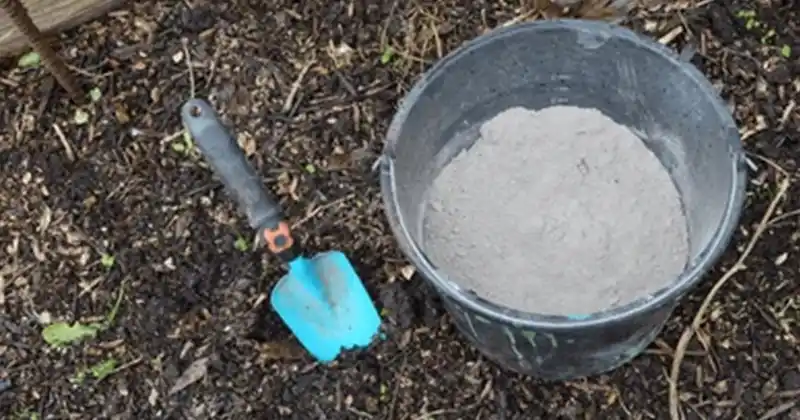Ash, specifically wood ash, has been used in gardening for centuries as a natural fertilizer and soil amendment. While many gardeners today rely on commercial fertilizers, the rising costs of these products and growing interest in natural alternatives have brought ash back into focus. So, what makes ash beneficial, and which plants thrive with its addition? Let’s explore the science behind using ash in your garden, how to apply it properly, and which plants will love you for it.
Why Ash is Beneficial for Gardens
Wood ash is a byproduct of burning hardwoods like oak and maple, and it’s rich in essential minerals. These minerals include potassium, calcium, magnesium, and phosphorus, which are crucial for healthy plant growth. When applied correctly, ash can improve soil structure, neutralize acidity, and help combat common garden pests.
- Potassium (K): Ash is an excellent source of potassium, which plays a significant role in flowering, fruiting, and overall plant health.
- Calcium (Ca): Essential for cell wall development, calcium helps plants grow stronger and makes them more resistant to diseases.
- Magnesium (Mg): Although present in smaller quantities, magnesium in ash supports photosynthesis by aiding in chlorophyll production.
- Phosphorus (P): Promotes root growth, flowering, and seed development.
Additionally, ash contains trace elements such as copper and zinc, which are essential for plant metabolism but needed in minimal amounts.
Ash as a Soil Amendment
The most important property of wood ash is its alkalinity. It can effectively raise the pH of acidic soils, neutralizing excess acidity. If you live in an area with acid rain or have naturally acidic soil, this can be a significant benefit. Soil pH is crucial to plant health because it affects nutrient availability. Most vegetables prefer a slightly neutral to mildly alkaline soil (pH between 6.5 and 7.5), and applying ash can help achieve this balance.
However, use ash cautiously, especially if you already have alkaline soil. Excessive use can raise the pH too high, making nutrients like iron, manganese, and phosphorus less available to plants, ultimately harming their growth.
How to Apply Ash to Your Garden
- Soil Testing First: Before adding ash, it’s wise to test your soil’s pH. You can purchase a pH meter or send a soil sample to a lab for a more accurate analysis. Ideal application rates vary, but generally, around 1-2 cups of wood ash per square meter is sufficient.
- Incorporating Ash into the Soil: Simply sprinkle the ash over the soil and lightly till it into the top few inches. Be mindful not to let ash accumulate in clumps, as this could create localized areas with excessively high pH.
- Ash in Compost: Another effective method is to incorporate ash into your compost pile. Adding it in thin layers helps to balance the carbon-rich materials, speeding up decomposition and enhancing the nutrient profile of your compost.
- As a Pest Repellent: Ash can also be sprinkled around plants to deter slugs, snails, and other soft-bodied pests. Its texture is uncomfortable for them to crawl over, providing a natural barrier without the need for chemical pesticides. Remember to reapply after rain, as water washes away the protective layer of ash.
Which Plants Benefit from Ash?
Not all plants appreciate the alkaline nature of ash. It’s crucial to know which plants will thrive and which may suffer if exposed to too much alkalinity.
Vegetables that Love Ash
- Tomatoes: Tomatoes are heavy feeders that love potassium, making ash an excellent addition to their growing medium. Potassium boosts fruit development and improves the flavor and sweetness of tomatoes. However, use no more than 100-200 grams of ash per square meter to avoid over-alkalizing the soil.
- Potatoes: Potassium is vital for potatoes too. Applying ash before planting can enhance both the yield and the quality of your potatoes. Use around 1 kg of ash per 30 kg of seed potatoes, but ensure it’s not in direct contact with the seeds to prevent any potential damage.
- Garlic and Onions: These bulb crops benefit from the calcium and potassium found in ash. Incorporate ash into the planting holes to boost growth and help fend off pests like onion flies.
Other Beneficiaries of Ash
- Carrots and Beets: Root vegetables like carrots and beets also enjoy a slightly alkaline soil, and adding ash can improve root development.
- Fruit Trees (Apples, Pears): Fruit trees appreciate the additional potassium and calcium that ash provides, which can enhance fruit quality, sweetness, and resistance to diseases.
Plants that Dislike Ash
While many garden favorites benefit from ash, there are notable exceptions that prefer acidic soils.
- Blueberries: Blueberries thrive in highly acidic soils (pH 4.5-5.5). Applying ash to their growing area would drastically raise the pH, causing nutrient deficiencies.
- Azaleas and Rhododendrons: These ornamental shrubs prefer acidic conditions and may suffer from chlorosis (yellowing leaves) if exposed to ash.
- Hydrangeas (Certain Varieties): Some hydrangea varieties turn blue in acidic soil. Adding ash will increase alkalinity, potentially shifting the flower color toward pink.
Conclusion
Wood ash is a powerful, natural resource that can benefit many plants when used correctly. By enriching the soil with essential nutrients and improving soil pH, ash supports robust plant growth and increases resistance to pests. However, caution must be exercised to avoid over-alkalizing the soil, which can harm plants. Always start by testing your soil’s pH, and use ash sparingly, ensuring that it’s well-suited for the specific plants you are growing.
By harnessing the power of wood ash, you can create a healthier, more productive garden while also reducing waste—making it a win-win for both your plants and the environment!
Inspired by this? Share the article with your friends!
